Third 3T Conference – Technology and Limits to Growth of Croatian Tourism
The preparations for the third edition of the 3T– Tourism, Travel and Tech conference are in full swing. The central theme of this year's 3T conference is smart tourism. The third 3T will be held on March 12 at the Kaptol Boutique Cinema in Zagreb.
The conference will feature Miikka Rosendahl as one of the keynote speakers. He will explain how Helsinki won the prestigious title of the Virtual Capital of the World and what Croatian tourist destinations can learn from their experiences. The panel discussion Smart Marketing in Tourism – What REALLY Brings Bookings? will be moderated by Ilija Brajković, and will include Robert Petković, Analytics Lead, Bruketa&Žinić&Gray; Petar Milevoj, Head of Digital Marketing, Maistra; and Tomislav Kosir, Internet Marketing Manager, Hotel Dubrovnik.
Which advertising channels are best for sales? What is producing results and what is not? How can we, and should we, fight Booking and other major players? The conference brings experts on four levels who will share their experiences and give tips on how to do marketing and advertising in tourism.
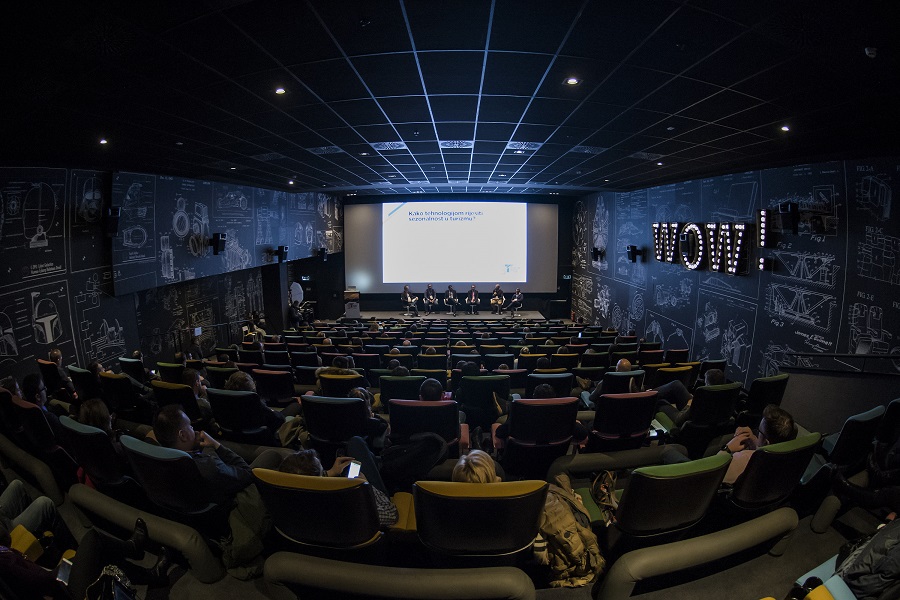
Natalija Havidić from the Ministry of Tourism will present the project of digitization of public services in the tourism sector.
Another panel discussion, Croatian Tourism in a New Technology Environment: The Limits of Growth, will be moderated by Željko Ivanković, an independent consultant. Although it is the most important local sector, Croatian tourism is lagging behind its competition. This has been established by the study Key Issues of Sustainability of Croatian Tourism, developed by the Polazišta i Perspektive think tank. The reasons for this lag are numerous, but one of the most important is that the development of tourism has not been managed as in competitive countries but has largely evolved chaotically, and the growth is primarily sustained by positive global economic trends. New technologies also influence changes in the tourism offer and demand, the study has established. Their development is not in the local hands, but their application and influence are, at least to an extent. According to analyses, the emergence of new technologies has partly affected Croatia’s lag behind the competition, by neglecting the infrastructure for services for which new technologies have increased demand (festivals, apartments ...). How can the application of new technologies make it possible to reduce the lag behind the competition, and what kinds of application are detrimental to this goal? This will be discussed by the roundtable Croatian Tourism in a New Technology Environment: The Limits of Growth.
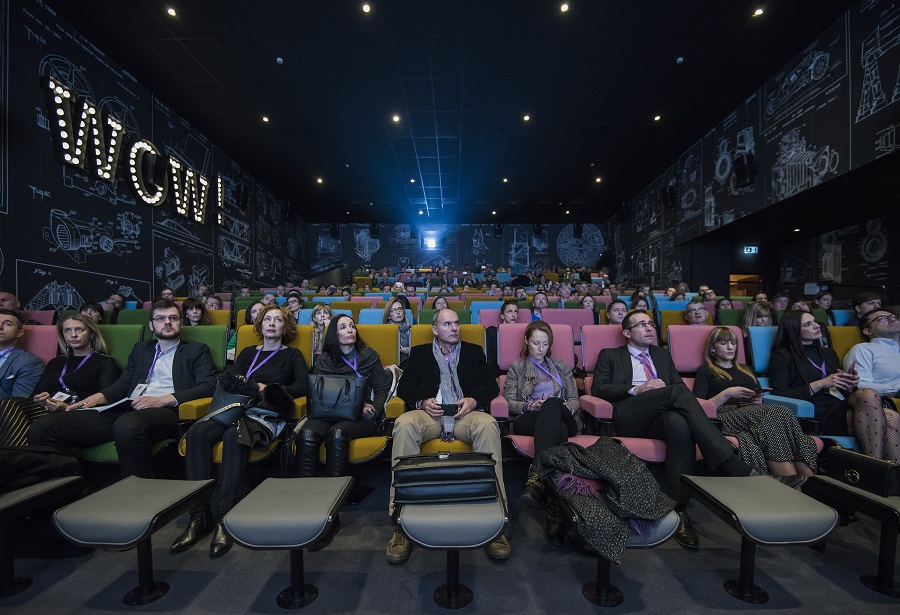
Among interesting lectures, we highlight The Mobile Payment Opportunities for Tourism-Focused Businesses by Sara Rasmussen; Digital Tourism Transformation: How to Achieve More? by Karlo Guštin; Distribution of Excursions in Few Clicks by Tatjana Peček; and Roadtrip with Millennials by Krešimir Jusup and Ana Martić.
In addition to this, a number of different lectures, presentations and discussions are planned.
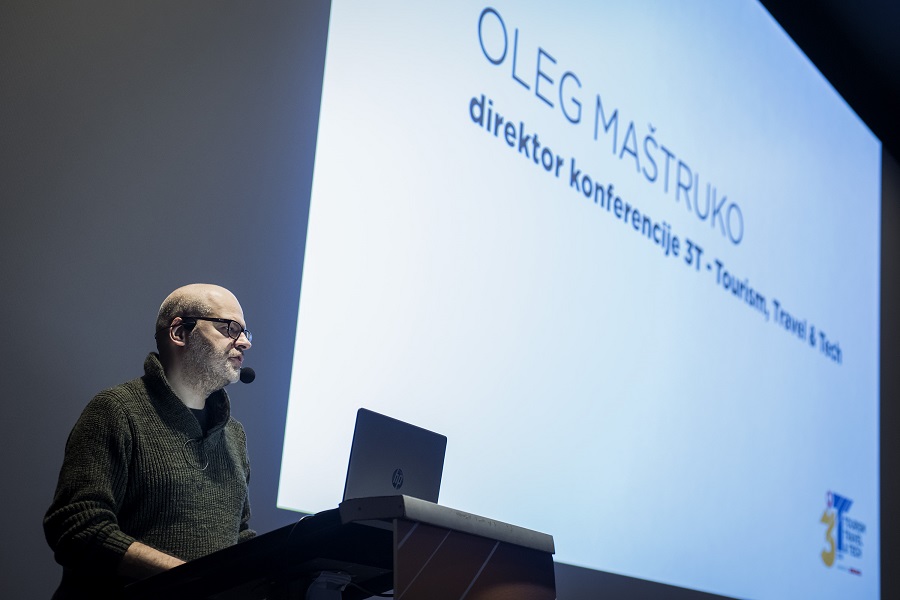
“Helsinki recently won the European Capital of Smart Tourism competition, and I am particularly pleased that we will hear from our guests from the Finnish capital about their experiences in using the technology to enrich their tourist offer. When we decided to organize the first event which would link two of the most successful Croatian industries – IT and tourism – in 2017, it was a somewhat risky move. The excellent response to this first 3T conference has shown us that we have struck a chord with wishes of the experts and the audience,” said Oleg Maštruko, the director of the 3T Conference.
The third 3T will be held on March 12 at the Kaptol Boutique Cinema in Zagreb. The number of participants last year was 280, and the same number is expected this year.
More information and registrations are available here.
A report from the last year’s 3T can be found here.
More news about Croatian tourism can be found in the Travel section.
Valamar Riviera's Net Profit Reaches 239 Million Kuna
ZAGREB, March 3, 2019 - Valamar Riviera earned 276.4 million euro in total revenues in 2018 or 11% more than in 2017, according to the audited annual results which this leading hotel company has recently published.
The company's total expenditure was 1.79 billion kuna, rising 11.6% from 2017.
"Total overnights reached 6.5 million growing 4.6% compared to the same period last year, while the average rate grew by 5%," the company says in a press release.
"In 2018, operating profit adjusted for one-off items increased by 13% to 94.8 million euro as a result of previous investments in portfolio repositioning and expansion as well as successfully balancing operating efficiency with increasing payroll and improving employee working conditions.
Valamar boasts that it has invested over 539 million euro in Croatian tourism so far.
"Investments worth 107 million euro are under way for the 2019 season as a continuation of Valamar’s investment strategy to reposition the hospitality portfolio towards premium products and services".
More news on Croatian tourism can be found in the Travel section.
Valamar Gets Subsidies for New Tourism Projects
It is essential that we have the Investment Promotion Act that allows us profitable investments, said Valamar Riviera which is in the middle of an investment cycle worth about one billion kuna. The largest Croatian tourism company has presented three projects that will expand its luxury tourism offer, reports Jutarnji List on March 2, 2019.
The first of them will be inaugurated this summer in Poreč and will bring us the Istrian five-star campsite. Valamar Riviera has invested 350 million kuna in the Istra Premium Camping Resort, which it says will be “the best camping resort in the Mediterranean", with have a thousand accommodation units and able to accommodate between 2,700 and 2,800 guests. Additionally, this summer Valamar Riviera will open the first Poreč family hotel at the five-star Valamar Collection Marea Suites.
“Our third project for this year, the Valamar Collection Resort in Poreč, is still under development, and we are aiming for it to operate all year long,” said Valamar Riviera, adding that they will have to employ new people in their company and increase salaries to the existing ones.
In addition to the Valamar Riviera, the Ministry of Economy presented eight additional certificates awarded for investment support. The nine Croatian companies plan to invest 1.2 billion kuna in the next three years. Also, four of the companies also received non-refundable grants for opening new jobs. “Today we have made it easier to implement the investment cycle worth 1.3 billion kuna,” said Economy Minister Darko Horvat.
Under the law, the minimum level of investments which are eligible for incentives is 150,000 euro, subject to the requirement of opening at least five new jobs to be retained for the next three years. The support itself depends on the net and gross salaries for newly-created positions. Among the incentive measures, the most attractive one is the reduction of the company tax rate by 50 to 100 per cent over a period of ten years.
According to Minister Horvat, this is all part of the ministry's project to help Croatian entrepreneurs and keep them in Croatia. “This is the continuation of the project we started in 2012 when the Investment Promotion Act was adopted. As part of this law, as many as 377 entrepreneurs have been encouraged to launch the total investments exceeding 16 billion kuna, and 12,750 new jobs have been opened,” said Minister Horvat.
Translated from Jutarnji List (reported by Lea Balenović).
More news about Valamar can be found in the Travel section.
How to Connect Tourism and Local Food Producers
On Thursday, a discussion was held at the Museum of Taste in Osijek on tourism and local food products, with an emphasis on the Istrian experiences. Slavonians welcomed their Istrian partners involved in the agriculture and tourism sectors through the organisation of events, protection and promotion of original products and dishes, and the creation of tourism products related to enogastronomy.
The discussion was attended by Ezio Pinzan, Ph.D., head of Agriculture Department of the Istrian County, Sanja Kantaruti, director of Central Istrian Tourist Board, and Mario Bratulić, Ph.D., Mayor of the Municipality of Sv. Petar u Šumi and founder of the "With Sausage to the EU" fair. The panel was moderated by Davor Šišović, a journalist with Glas Istre, a publicist and a promoter of enogastronomic events who emphasized in his introductory remarks that “tonight we are discussing food, not for subsistence, but food as one of the basic tourism identifiers, we are talking about gastronomy as an art, as a tradition. We are also talking about the policy that must ensure that all these things are not forgotten and have an active, creative and productive function.”
In addition to the experiences of Istria, the participants also discussed creating links between family farms and catering and hospitality facilities in the area of Osijek-Baranja County and further plans for linking the agriculture and tourism sectors. Since food and hospitality is one of the first associations about Slavonia, the Istrian experiences are precious in the process of creating and establishing Slavonia and Baranja as an enogastronomic destination. Along with the representatives of Istria, the panellists included Osijek-Baranja County Prefect Ivan Anušić, the chef of the Croatian Football Federation and Osijek Hotel Tomica Đukić, the head of county Agriculture Department Silva Wendling, and Director of Osijek-Baranja County Tourist Board Ivana Jurić.
The topics were the role of local and typical products in forming a tourist experience, the importance of supporting the local production sector, enogastronomy as an essential tourist product of Croatia and the expertise of Istria, the philosophy of zero kilometres "in the kitchen", the recognizability of a destination created through tastes and smells, the importance of educating catering staff on local wine ranges and typical dishes, the protection of products such as the Istrian boškarin or black Slavonian pig, and other related topics.
Ezio Pinzan emphasised that almost twenty years ago there were just a few boškarins in the whole of Istria, who had the status of pets, and that today there is no serious family farm which does not offer meat of the Istrian cattle. The Istrian County efforts also helped turn the focus on the boškarin. He also noted that substantial progress has been made in the field of winemaking through the establishment of the Vinistra association and the eponymous event and that the county has invested heavily in the reconstruction of abandoned olive groves. “For the fourth year in a row, we are the best olive growing region in the world. Just yesterday we received a protected designation of authenticity for our extra virgin olive oil” said Pinzan and continued, “Truffles are something we are yet to exploit in our gastronomy. Istrian prosciutto is the first product that we protected with a designation of origin, and it took us fifteen years,” which shows that success will not come overnight.
Mario Bratulić, who has a doctorate on the topic of Istrian sausages and autochthonous products, pointed out that Sv. Petar u Šumi is the demographically youngest Istrian municipality, a small, but active and propulsive community, and that they wanted to create a gourmet event that would go beyond the local community. They came with this idea to the county. “As part of the fair, we enabled producers from Slavonia to come with their products. Last year, one Slavonian producer sold a full van of charcuterie products! We have established cooperation with fifteen sausage events and associations from Central Europe.”
The head of Agriculture Department of Osijek-Baranja County Silva Wendling emphasised that since 2015 the county has been co-financing service providers in catering and tourism sector who buy food from local producers and added that "when tourists come to a certain area, they want to experience this region, among other things, through taste.”
Director of Osijek-Baranja County Tourist Board Ivana Jurić stressed that Slavonia combines agrotourism, wine tourism and active tourism, and added that "we are only starting to realise that we are a tourist destination, but the demand for Slavonia is on the rise.”
More Slavonia news can be found in the Lifestyle section.
Students from Mostar and Philippines to be Hired for Upcoming Croatian Tourist Season
This Croatian tourist season, catering establishments could see employees from other countries, reports Splitski Dnevnik on February 26, 2019.
However, not even Croatia’s neighbors are thrilled with working conditions in the country, which raises the question of precisely what kind of working conditions Croatia provides. This topic of employment and importing foreign workers in the tourist season was discussed on Tuesday in the Croatian Chamber of Commerce.
"The fact is that we had a shortage of workers already last season, and the quotas have not been utilized, because many were not interested in working in our area. That is why the Government and our Chamber of Commerce have turned to some other markets. They include the Far East, the Philippines, and in two weeks, we will visit Mostar University along with representatives from Dubrovnik. There are about 10,000 students there, and half of them have the right to work through a student service in Croatia, so that's a solution. This season begins in a month, and we have to solve this and do it perfectly,” says Jozo Tomaš, president of the Croatian Chamber of Commerce.
The panel pointed out that Filipinos have already taken over many Croatian positions in maritime affairs, so why not in the hospitality industry? They added that Filipinos are hired because they are much cheaper than Europeans, and they rarely wonder how long their job lasts.
"I've spent a lot of time on the boat with them and can say that they are very loyal and quality. At this stage when there is such a shortage of people, the point is not that they are cheap, but that they are high quality. Everywhere in the world, Filipinos are very much sought after,” says Ino Munitić, the owner of the Pasat maritime agency, which is involved in the employment of seafarers.
Croatia is very interesting, mystical and attractive for Filipinos, and although the country is unknown to them, they are still ready to leap. Some 10,000 of them may already come to work this season.
Although the advantage would be that employees in Croatian tourism speak Croatian, the fact is that they are still working with mostly foreigners, so English is the primary language. This is precisely why businesspeople assume there will be no language barriers.
"It is on the initiative of the tourist community and HGK that we organized this panel, because the question is whether our locals are the ones who are the best promoters of Croatian tourism and whether they need to invest in their knowledge and education and whether they need to secure jobs or bring in the foreign workforce. I consider that our people, the local population and authentic events and authentic destinations are still a priority. However, at this time, the shortage of labor will have to be addressed by other measures, but we hope that they will be short-term,” says the director of the Split Tourist Board, Alijana Vukšić, who believes that Croatians should provide better working conditions in order to motivate locals to work in the tourist season.
Large hotels in Split are investing in their human resources and insisting on education, says human resources manager of Radisson Blu, Sandra Čanić.
"Unfortunately, a lot of organizations, although we are in the 21st century, do not recognize the importance of systematic human resource management. Our story about this does not start now in preparation for the season, but it needs to be prepared continuously, working on motivating and retaining the existing staff, and not necessarily through an indefinite contract, but using a measure like the permanent season. We currently employ around 130 employees and 150 more during the season. Of this, one significant part belongs to the permanent season, but we also cooperate with schools and colleges, and we receive a large number of trainees. We also participate in various training programs through the Employment Service, to get quality staff,” said Čanić.
This year, Croatia should give up the quota-based labor force imports, which was set at 65,100 people in 2019, said Davorko Vidovic, Labor Policy and Employment Advisor of HGK.
To read more about travel in Croatia, follow TCN’s dedicated page.
Belgrade Tourism Fair: Is Serbia a Croatian Wine and Tourist Market, or Not?
February 26, 2019 - Croatia's strange tourism relationship with the Belgrade Tourism Fair, the region's largest, continues. Wine but not tourism?
I first came across the Belgrade Tourism Fair last year.
Having launched Total Slovenia News a couple of months before and with Total Montenegro News about to go live, the prospect of finding every significant tourism business and organisation in one room for four days was too hard to resist, and I headed to the Serbian capital with great anticipation.
I could not have found a better scenario. Montenegro had the largest stand of all, all the main Slovenian tourism regions and spas were represented, and there were even the options of preliminary meetings with other countries in the region, in case we ever managed to expand further.
There was just one thing missing.
Croatia.
The Belgrade Tourism Fair is the largest in the region, now in its 41st year, but last year there was not a single tourist board there. Well, officially at least...
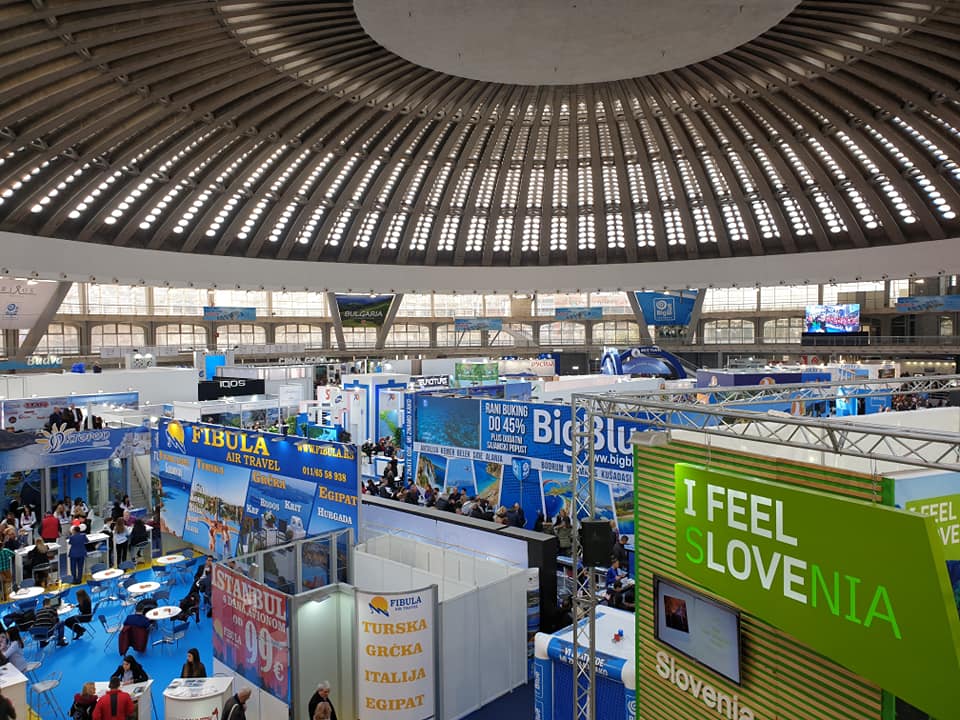
My initial conclusion is that Croatia had decided not to exhibit in Serbia due to the regional conflict back in the 1990s, but then I was surprised to learn that Croatia had been the partner country of the Belgrade Tourism Fair as recently as 2011. The Secretary of State for Tourism at the time stated:
At the 33rd Belgrade Tourism Fair, Croatia will be especially presented as a tourist destination. The State Secretary of the Croatian Ministry of Tourism, Ivo Mujo, stated that Croatia's arrival [presentation] in Belgrade, after accepting the invitation to become a partner country of the Belgrade Fair this year, was a new dimension of cooperation.
"Serbian guests are important to us in Croatia, but this isn't a one-way process, because more and more Croatian tourists are going to Serbia. He stressed that he believes that this year's presentation of Croatia in Belgrade will bring Croatia and Serbia closer in the tourist(ic) sense."
And just seven years later, no official Croatian tourism presence whatsoever. I asked the organisers why, and they checked the list of exhibitors and said they were surprised that there were no Croatian tourism boards there. Rumours of a Croatian boycott of the fair after President Vucic's visit to Zagreb were on everyone's lips, but officially the Croatian National Tourist Board said that their interests were elsewhere:
From 2010 to 2017 the Croatian National Tourist Board (CNTB) organized a continued promotional presence of the Croatian tourism offering at the Belgrade tourism fair. While in 2011, we were also the partner country of the fair for that year. However, despite multiple successful years of intensive promotion at the fair, the interest of partners interested in utilizing the CNTB fair facilities/booth, namely tourist boards, agencies, tourism-related companies, etc. wishing to present their offering at the fair has waned over the past few years, decreasing year-in, year-out. Even though there was not enough interest to have a formal presence at the fair this past year, we would like to point out that aside from a presence at fairs, the CNTB also promotes the destination through various marketing activities in Serbia. For example, in May 2017 an online brand campaign was executed on the Serbian market, which included promotional advertising of our key product categories: sun and sea, food and wine and nautical. The campaign was promoted through a range of online portals and over 6 million ad views were achieved.
Serbia represents a neighbouring market that has a strong knowledge of Croatia as a destination as well as Croatia's tourism offering. It is also a market where most visitors arrive through individually organized trips and when looking at the number of overnights in 2017, ranks as the 18th market (with 973 thousand overnights). We still plan a continued presence on the market through other promotional campaigns and activities.
I asked the current Secretary of State for Tourism about the lack of official Croatian tourist board presence, and I received this reply:
Croatia is a very popular tourist destination in Serbia, and tourists from Serbia are our traditional guests. Last year in Croatia, guests from Serbia had 153 thousand arrivals and 973 thousand overnight stays, representing an increase of 11 per cent compared to 2016. Similarly, Serbia is a very popular destination for our people, especially when it comes to shorter or city break visits. In this respect, we believe that positive trends in the growth of tourist traffic and accompanying promotional activities on both sides will continue in the coming years.
Reason enough to make a little effort to attract some more tourists, especially in a traditional market so close to home, where the potential was to get a tourist not for a one time visit from China, but for life.
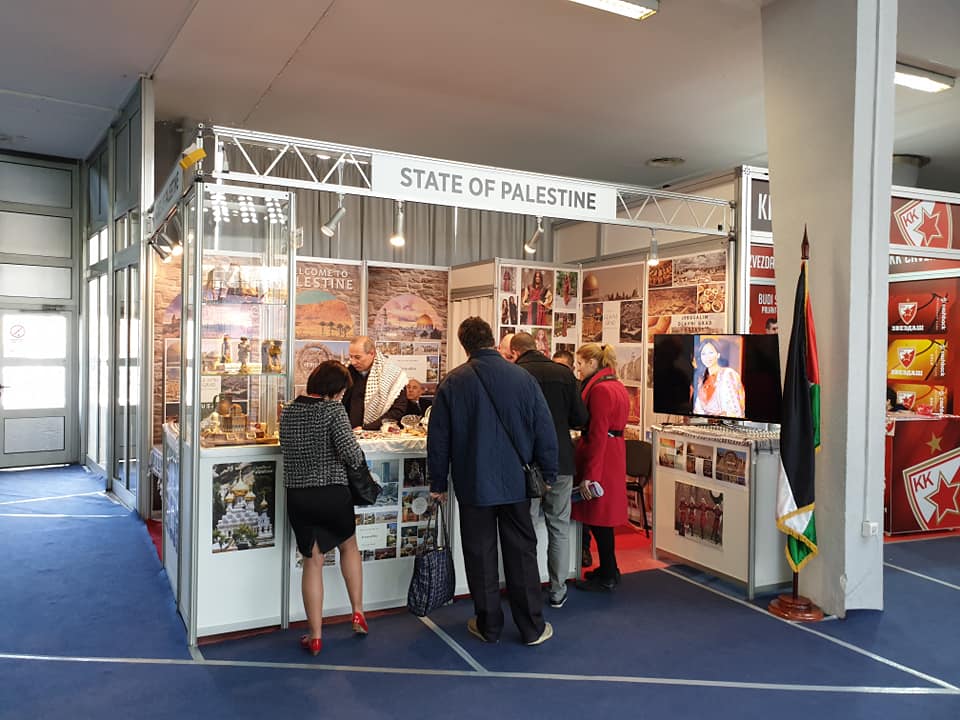
Apparently not.
Walking around the fair, I was struck by the conversations of young people walking around, looking for their next holiday. Greece shone. So did Turkey, Bulgaria, Slovenia and Egypt. There was also plenty of more exotic destinations which attracted plenty of interest. I noted that the boys from Palestine were back after a successful Belgrade Tourism Fair in 2018.
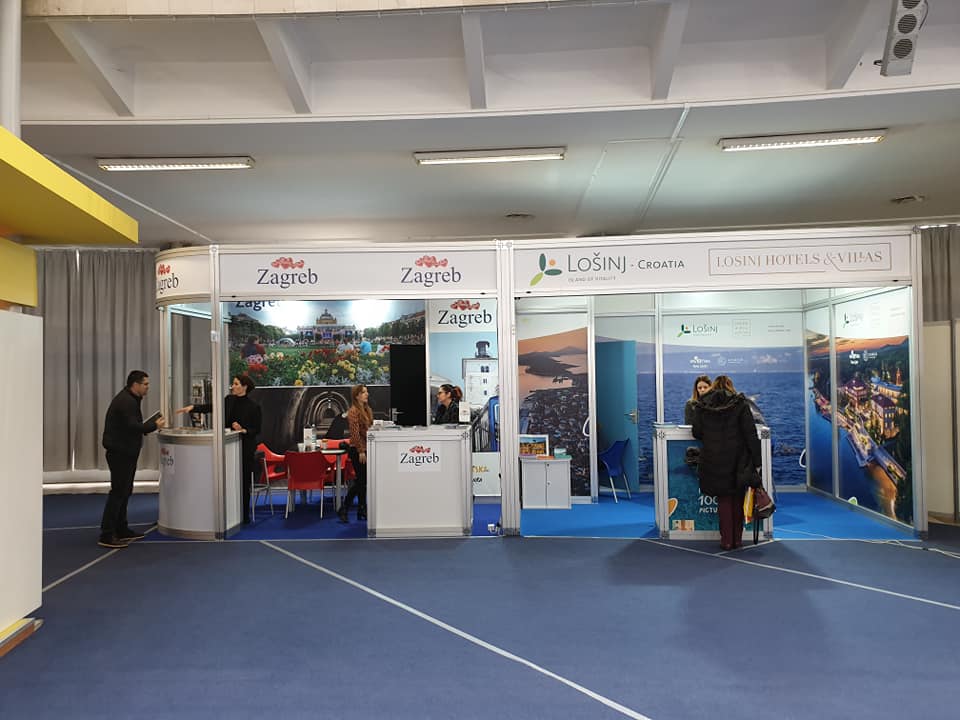
And somewhere, almost as an afterthought, the entire official Croatian representation - the Tourist Board of Zagreb (at least this fair actually existed and they didn't pay 29,000 euro for nothing) and the Tourist Board of Losinj.
That was it.
A little more research showed that there were a small number of other tourist boards there in a different capacity, including this presentation of Eastern Croatia.
But at an influential fair on Croatia's doorstep, where Croatia was notable by its absence.
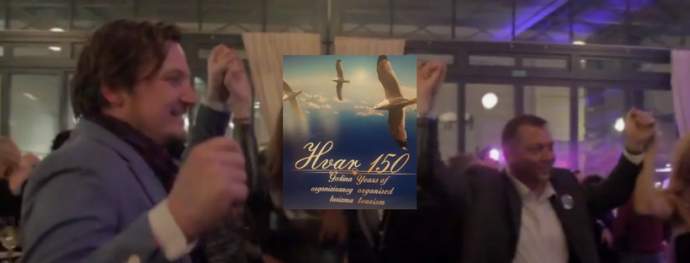
Even our old friends, the Kings of Accidental Tourism from Hvar were not to be seen. Last year was 150 years of organised tourism in Europe, which was celebrated with great style paying tribute to the special Hvar-Belgrade bond at a party that was never supposed to make the Croatian media. But in year 151, that love seems to have waned.
Unofficially, I can confirm that the Hvar love of Belgrade is real. I bump into more people from Hvar each time I visit the Serb capital than I do walking the streets of Jelsa.
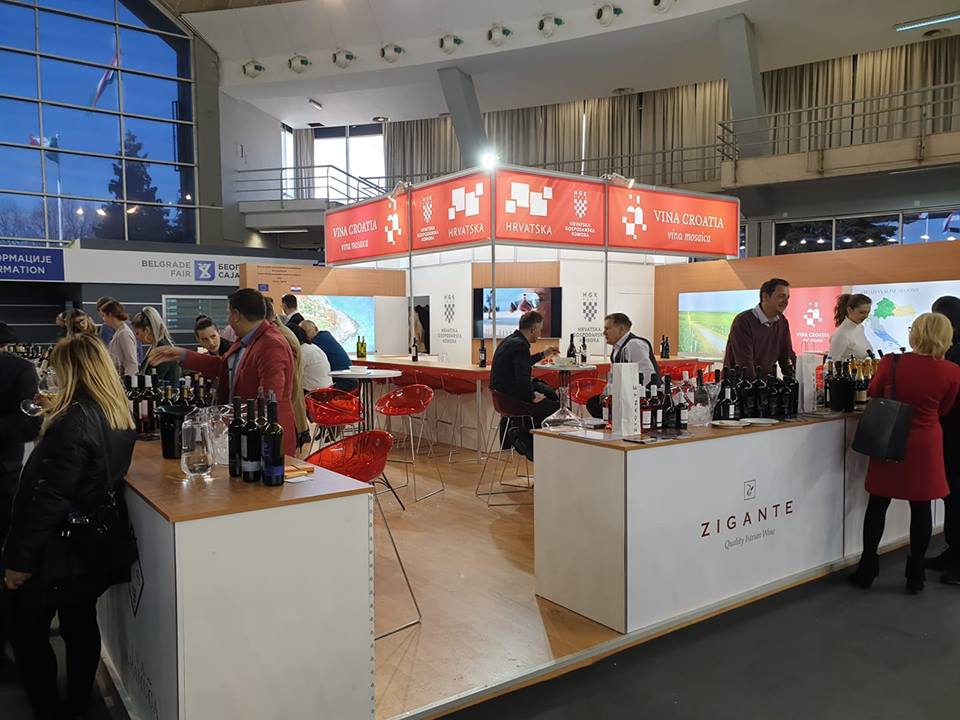
So why the lack of Croatian interest in the Belgrade fair? The simple explanation from one section of our enlightened readership is that Croatia doesn't want any Serbs to visit.
It is an argument that one can understand from recent history, perhaps, not a great economic argument, but understandable. But then you go to the wine section of the Belgrade Tourism Fair, and seemingly the biggest stand belongs to... Croatia.
Ably supported by the Croatian Chamber of Economy.
The Croatian Chamber of Economy at the Belgrade Tourism Fair where Croatia had all but totally boycotted the main tourism section once again, but was out in force promoting wine. None of the numerous Croatian exhibitors could understand the lack of official Croatian tourism presence at such an important fair on Croatia's doorstep. One which had the potential to woo the next generation and get them hooked on holidays in Croatia for the next 30 years.
But the Kings of Accidental Tourism obviously have a plan.
Palestine 2019, anyone?
Eastern Croatia Presented at Belgrade Tourism Fair
The Belgrade Tourism Fair is one of the largest in the region, and this year it was held from 21 to 24 February. It was an ideal opportunity to present the tourist offer of Slavonia and Baranja. Visitors were introduced to the European Amazon bicycle route, the Osijek and Subotica Art Nouveau tourist route, the Green Pathways of the Danube and Drava rivers, and the Central Danube Tour – the Central Danube Tourist Destination.
The European Amazon bicycle route stretches from the Alps to the Pannonian plain along the most extensive natural river system in Central Europe. It covers Austria, Slovenia, Hungary, Croatia and Serbia and nearly one million hectares of highly-valuable natural and cultural landscapes and more than 1,000 kilometres of cycling trails.
The Art Nouveau tourist tour of Osijek and Subotica links these two Central European towns of similar size and common historical heritage. Art Nouveau, as a new architecture style, appeared in Osijek in parallel with its emergence in Vienna. Apart from the construction of Art Nouveau housing and industrial buildings, Osijek proudly boasts the tradition of Art Nouveau physical planning as well, since it started with the policy of planned street and park construction in the early 20th century. The most impressive examples of the Art Nouveau in Osijek are the European Avenue, with a unique series of Art Nouveau houses with front-yards, the Postal Palace, the Sakuntala Park, the Urania cinema, and the Art Nouveau fountain.
The Green Pathways of Danube and Drava combine cycling, hiking, kayaking, canoeing and horseback riding, and stretch from Belišće, on the river Drava, for 54 kilometres to Erdut, where the river joins the Danube. On this route, the visitors can learn about the cultural heritage of this region and visit, for example, the Erdut Tower, the sacral heritage (the sanctuary of Our Lady of Consolation in Aljmaš and the sanctuary of St. Anna in Bistrinci), the industrial heritage of the town of Belišće, and of course the natural heritage, the flora and fauna of the Danube and the Drava rivers.
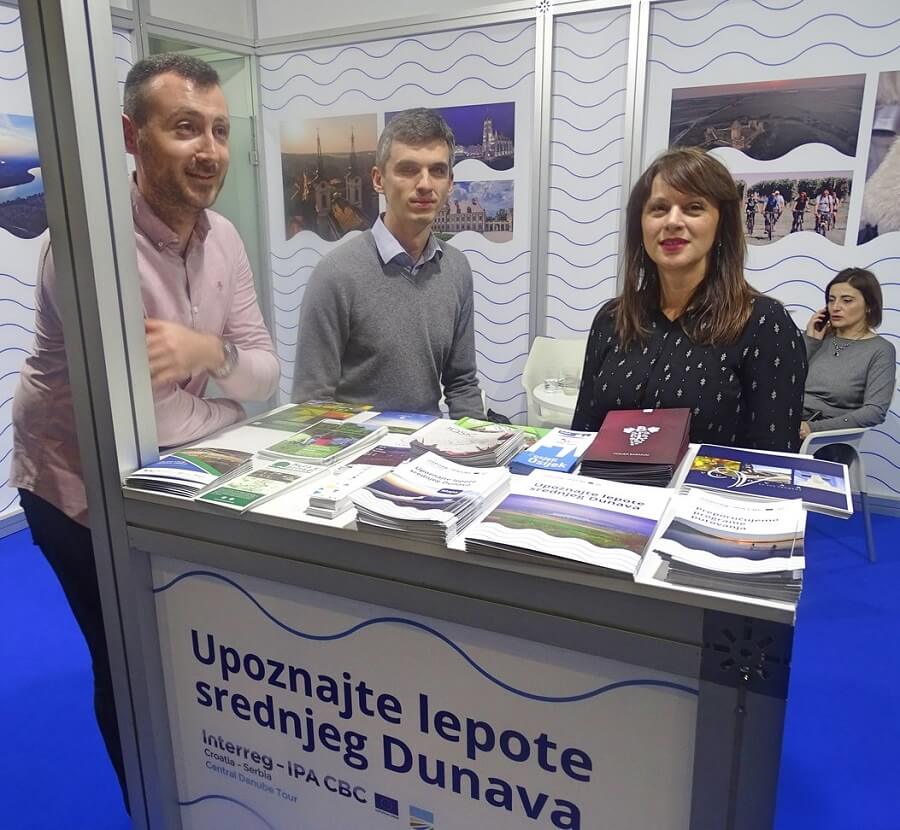
The Central Danube tourist destination stretches from Baranja in Croatia to Kovilj-Petrovaradin marshes in Serbia. This destination integrates multi-ethnic heritage, natural and cultural resources and landmarks into a single package visible in the local, regional and international markets. The common package of tourism products and services was presented through thematic cross-border routes. This destination offers tourists a mix of Danube natural wealth and the Pannonian way of living. Its contents include mystical Pannonian legends, the cultures which have left traces about their existence from prehistoric times to the present day, the picturesque nature with the varied animal and plant species, the scents and tastes of gastronomy which bases its uniqueness on the mix of peoples and has given birth to the wealth of dishes rarely seen elsewhere.
The wine offer of this area is represented by Baranja, Erdut, Ilok and Sremski Karlovci. Baranja and Erdut are rural wine destinations, while Ilok and Sremski Karlovac are urban destinations steeped in history. The rich history of this region is best presented by the Museum of the Vučedol Culture. The Kopački Rit Nature Park, located on the left bank of the Danube, has its counterpart in the special nature reserve of Gornje Podunavlje situated on the right side of the Danube, and a bit farther away is the special nature reserve Kovilj-Petrovaradin marshes.
The Belje wines, which are produced in Baranja, cover the largest area of vineyards in Croatia (650 hectares), while Zmajevac is widely known for its “surduks”, “gators” and events such as the Wine Marathon. The Erdut wine area is particularly well-known for its great Danube meander, the largest wooden wine barrel in the world still in use, and the Bike&Wine event. Ilok is famous for its medieval town core, the country estate of Principovac, and the Ilok Grape Harvest event.
In addition to the destinations and topical tours from the eastern part of Croatia, visitors of the Belgrade Tourism Fair were also very much interested in similar routes from the wider Pannonian area, such as the Vojvodina Wine Paths, and the Trail of Cheese and Honey, located in the Žabalj municipality in Vojvodina.
More news about Croatian tourism can be found in the Travel section.
Kvarner Tourist Board Developing Cycling Tourism, Branding Itself as Outdoor Destination
The Kvarner Tourist Board has successfully developed the region as an outdoor tourist destination over the last few years.
Split, is the Old City Center Dead?
February 21, 2019 - Slobodna Dalmacija's Tihana Marović details her winter walk through the bleak Split city center.
Valamar Riviera Agrees to Pay Substantial Bonus to Employees
Valamar Riviera has signed an agreement with the Trade Union of Tourism and Services of Croatia and the Trade Union of Istria, Kvarner and Dalmatia, providing Valamar employees with new benefits, including the 13th salary in the net amount of 5,000 kuna. Valamar will pay the 13th salary to all permanent employees and all workers who will work for the company for at least ten months in 2019. The 13th salary will be paid by December 2019, reports Večernji List on February 20, 2019.
Valamar has also granted its employees a minimum net salary of 5,000 kuna for all employees who perform the full monthly numbers of hours. As for seasonal workers, Valamar will pay a special bonus for the season between 1,200 and 2,000 kuna net, depending on the number of months worked, out of which 500 kuna net will be paid to all employees with the pay for the month of July. In addition to the guarantee of a minimum net salary of 5,000 kuna for all employees, the 13th salary and special bonuses during the season, Valamar will pay a Christmas bonus in the net amount of 2,000 kuna to all permanent employees in 2019.
Due to the benefits offered to its employees, Valamar is the only tourism company that has entered the list of Top 20 employers in Croatia and was rated as the best employer in tourism. Each year, Valamar creates between 300 and 500 full-time positions and offers excellent opportunities for career development, with a developed system of internal and external training.
The improved benefits for Valamar employees have been welcomed by social partners led by the Trade Union of Tourism and Services of Croatia and the Trade Union of Istria, Kvarner and Dalmatia. Eduard Andrić, the president of the Trade Union of Tourism, said: “Valamar continues to increase the wages from year to year, through the negotiations with the trade unions which is the only way to prevent the labour force from moving abroad, which has so far created a considerable shortage of workers in the tourism and hospitality industry.”
Marina Cvitić, the president of Trade Union of Istria, Kvarner and Dalmatia, emphasised: “Valamar is one of the first tourism companies to recognise the problem of the lack of tourist workers and accordingly take action to ensure a sufficient number of seasonal workers, as well as to keep the full-time workers. Over the last three years, the salaries have risen by over 20% on average. The agreed payment of the total non-taxable amount of 7,500 kuna a year to most permanent employees and those who will work longer than ten months will mean an increase in annual income of up to 10%, so we do not doubt that these workers will be satisfied. This is how responsible employers behave towards workers who are the key to their success. I must also point out that the employer fosters social dialogue, while the continuous improvement of the position of both permanent and seasonal workers is a result of constructive dialogue and respect for the views of social partners. "
Translated from Večernji List.
More news about Croatian tourism can be found in the Travel section.


